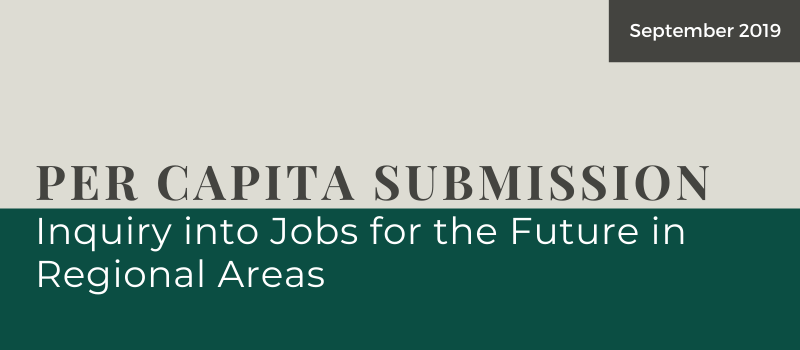Executive Summary
There are numerous reasons for working to improve employment outcomes in regional Australia. These include the wellbeing and viability of regional and rural towns and cities as well as the need to take pressure off overcrowded capital cities, where infrastructure is straining to keep up with population, particularly in Melbourne and Sydney.
Our unique country, with a vast land mass and low population density, requires unique regional development solutions. While lessons can be learnt from successes and failures in other countries, we need to chart our own course, acknowledging our unique challenges and advantages.
The goal should be ‘sustainable prosperity’ for our regions, not economic growth and job creation at all costs. Achieving socially, economically and environmentally sustainable employment growth in regional Australia will require a well-designed national process that allows for the creation of location specific programs: a program that works in Geelong will not necessarily work in Broken Hill. We cannot create one-size-fits-all, top-down solutions to regional development. Instead we need processes that result in tailored combinations of skills and training development, infrastructure provision, direct government job creation and industry policy solutions that assist and encourage the expansion of existing businesses and the creation of new businesses in regional Australia.
Similarly, we need different solutions for regional areas with existing high unemployment than for those facing future employment transitions. We must not wait until disruption and structural adjustment are upon a community before we act. Skill atrophy and entrenched unemployment and underemployment take hold quickly in towns and regions experiencing declining employment or major industry closure. Anticipating such events and setting in train transition programs years in advance is critical for the wellbeing of affected individuals and communities.
This submission addresses points a, c, d and e of the commissions Terms of Reference.

